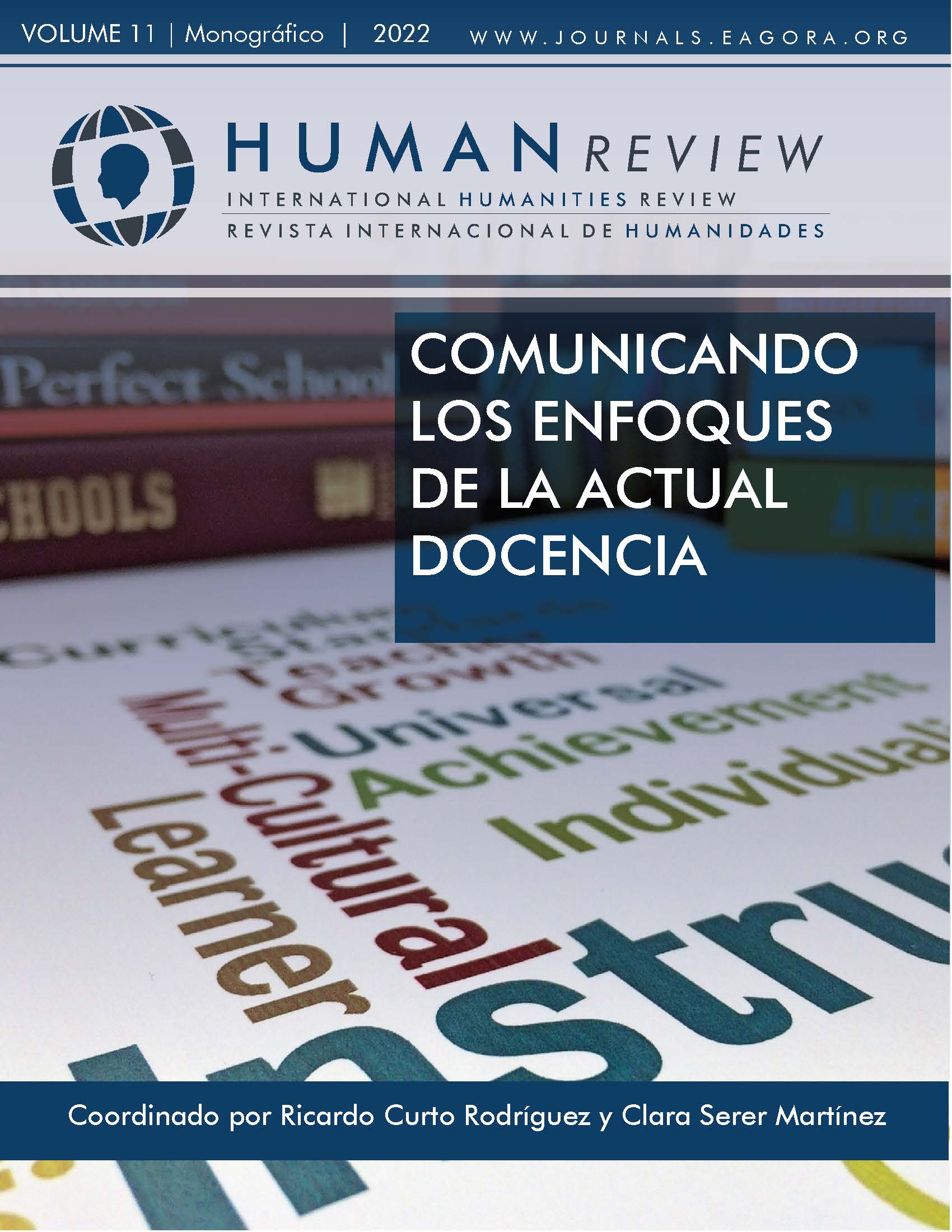Corporate social responsibility and training in value generation
Prosumer applications in proximity audiovisual
DOI:
https://doi.org/10.37467/revhuman.v11.3862Keywords:
Corporate Social Responsibility, Prosumer, Proximity, Value generation, Audiovisual, Collaborative, TeachingAbstract
Teaching subjects related to audiovisual production could be considered an ideal issue to develop the use of the production dossier. This model with a portfolio format, used in the professional world, allows students to intuitively develop the prosumer role, creating local audiovisual content within the framework of a mock audiovisual production company, which generates value from the initial script in a way that following this model, the trainer can build skills in Corporate Social Responsibility so that students and companies can implement these policies in their operations.
References
Augros, J. (2000). El dinero de Hollywood. Paidós.
Benjamin, W. (2003). La obra de arte en la época de su reproductibilidad técnica. Editorial Itaca.
Cabezón, L.A. y Gómez Urdá, F.G. (2004). La producción cinematográfica. Cátedra.
Chion, M. (1992). El cine y sus oficios. Cátedra.
Clemente Mediavilla, J. (2009). El papel del productor en el proceso de fabricación fílmica. En J. Marzal Felici y F.J. Gómez Tarín (eds.). El productor y la producción en la industria cinematográfica (pp.). Editorial Complutense.
Cuevas, A. (1976). Economía cinematográfica. La producción y el comercio de películas. Antonio Cuevas Puente.
Díaz Muñoz, R., Quintana García, C., Marchante Lara, M. y Martín Machuca, M. (2021). Responsabilidad social a través del trabajo colaborativo: herramientas virtuales y recursos didácticos en inglés, Revista Qurriculum, 34. 81-94.
Feldman, S. (1979). Realización cinematográfica. Gedisa.
Gomery, D. (1991). Hollywood: el sistema de estudios. Verdoux.
González-Aldea, P. y Marta-Lazo, C. (2015). La metodología del aprendizaje-servicio como herramienta en la formación de los periodistas, Opción, vol. 31, núm. 3. 564-581.
Gubern, R. (1993). Historia del cine. Lumen.
Imbert, G. (2003). El zoo visual. Gedisa.
Monterde, J.E. (1995). La renovación temática. En J.E. Monterde y E. Riambau (Coords.). Historia general del cine. Volumen XI. Nuevos cines (años 60) (pp. 145-187). Cátedra.
Monterde, J.E.; Selva, M. y Solà, A. (2001). La representación cinematográfica de la historia. Akal.
Monterde, J.E. (2004). La Nouvelle Vague. Sus protagonistas. Paidós.
Pardo, A. (2001) El cine como medio de comunicación y la responsabilidad social del cineasta. En M. Codina (ed.). La ética desprotegida: ensayos sobre deontología de la comunicación (pp. 117-141). Eunsa.
Toffler, A. (1980). La tercera ola. Plaza & Janes.
Tous Rovirosa, A. (2009). Paleotelevisión, neotelevisión y metatelevisión en las series dramáticas estadounidenses, Comunicar, nº33, v.XVII. 175-183.
Downloads
Published
How to Cite
Issue
Section
License
Those authors who publish in this journal accept the following terms:
- Authors will keep the moral right of the work and they will transfer the commercial rights.
- After 1 year from publication, the work shall thereafter be open access online on our website, but will retain copyright.
- In the event that the authors wish to assign an Creative Commons (CC) license, they may request it by writing to publishing@eagora.org









